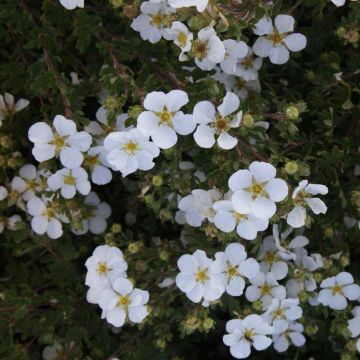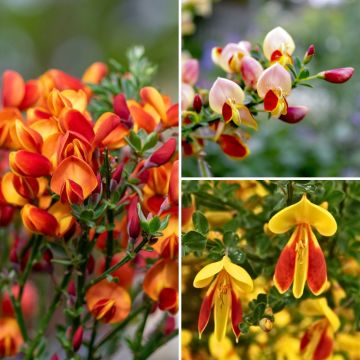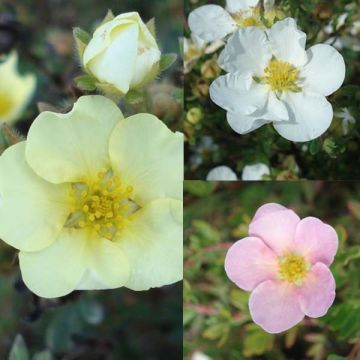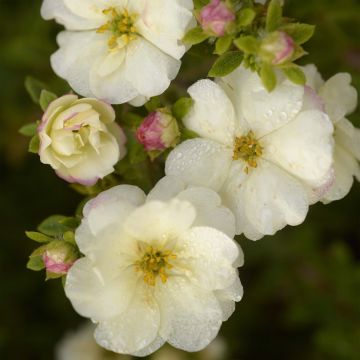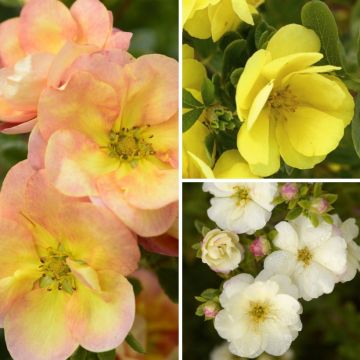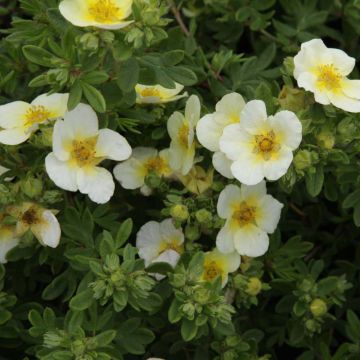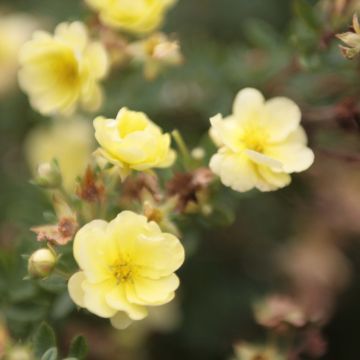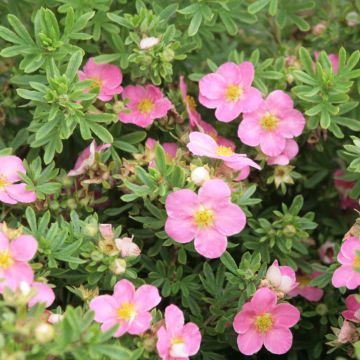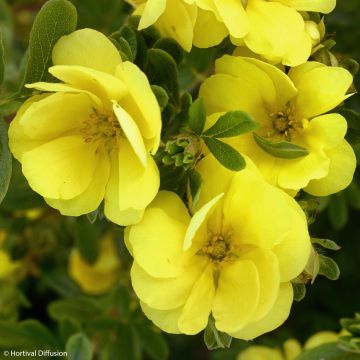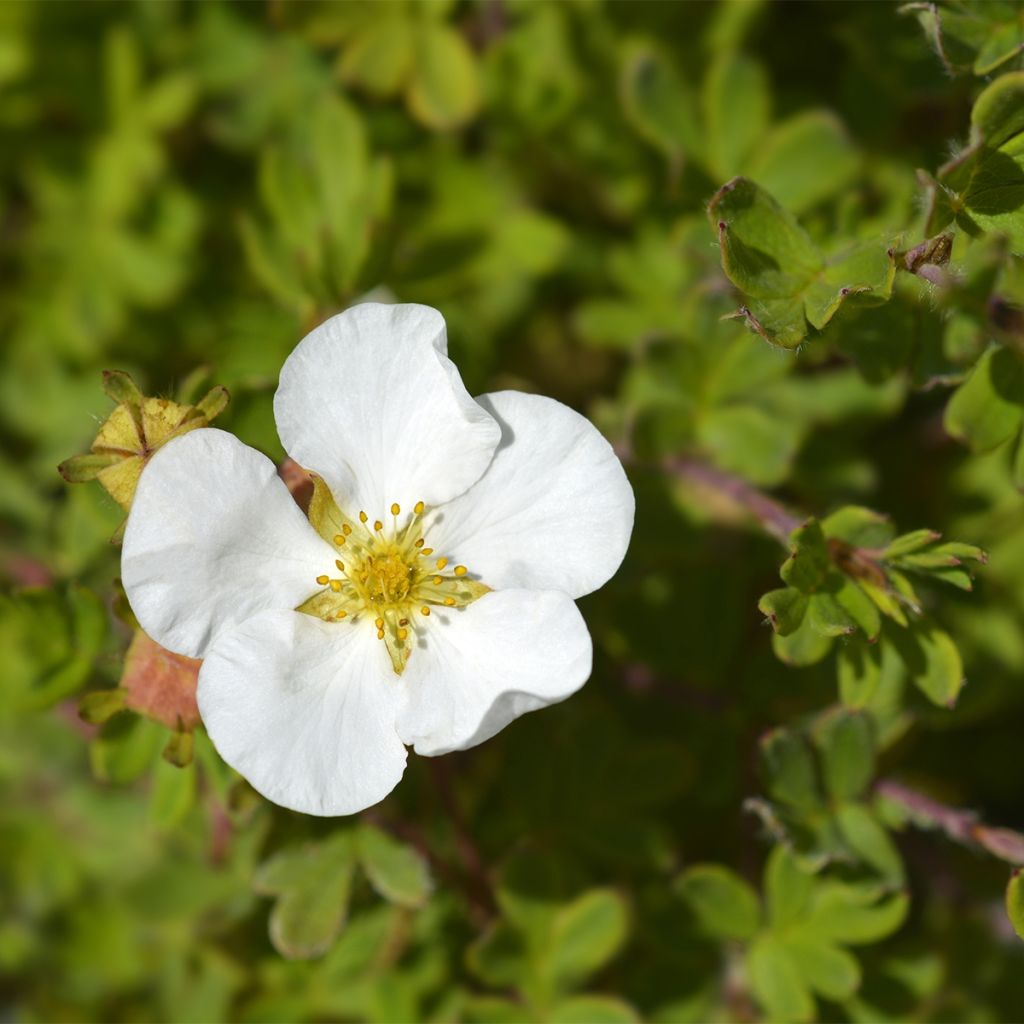

Potentilla fruticosa Bella Bianca - Shrubby Cinquefoil
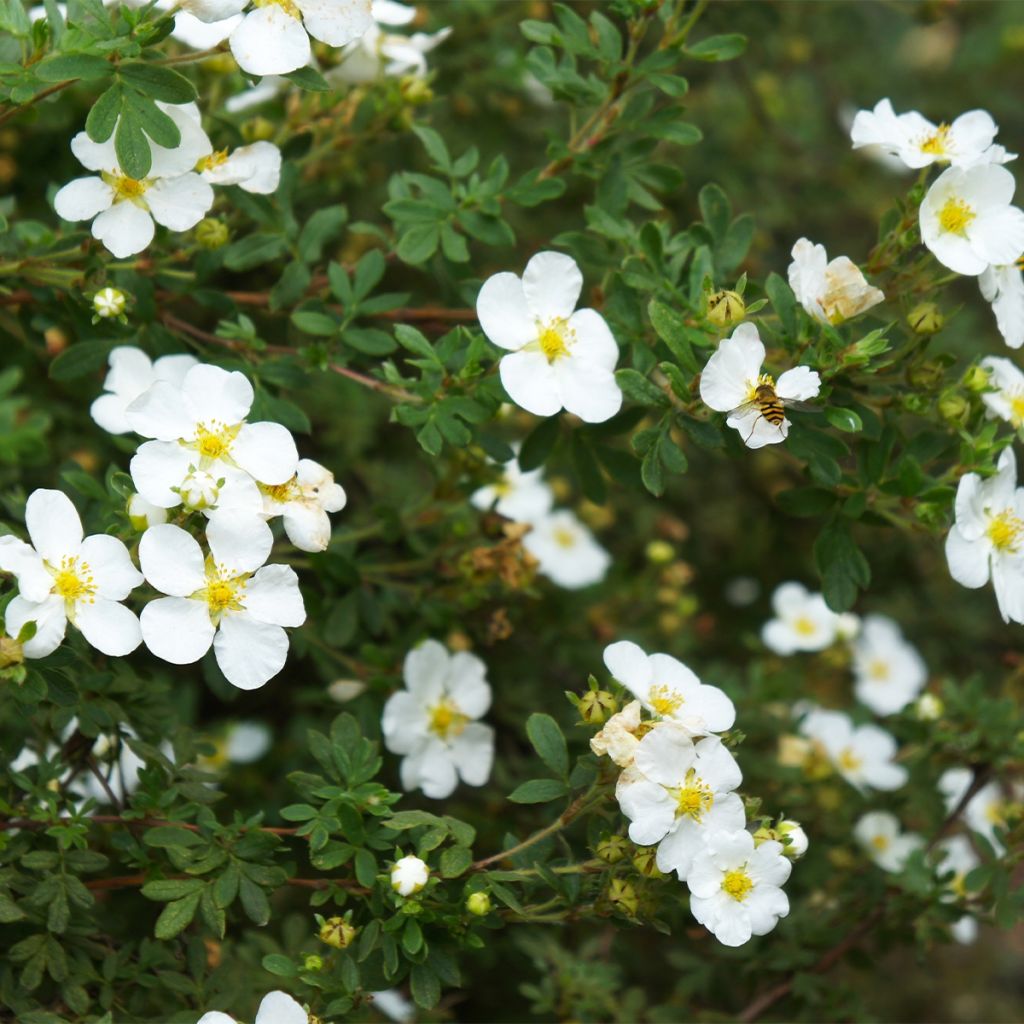

Potentilla fruticosa Bella Bianca - Shrubby Cinquefoil
Potentilla fruticosa Bella Bianca - Shrubby Cinquefoil
Potentilla fruticosa Bella Bianca
Shrubby cinquefoil, Golden hardhack, Hardhack, Prairie weed, Widdy
This item cannot be shipped to the selected country
Delivery charge from €5.90
More information
Schedule delivery date,
and select date in basket
This plant carries a 24 months recovery warranty
More information
We guarantee the quality of our plants for a full growing cycle, and will replace at our expense any plant that fails to recover under normal climatic and planting conditions.
From €5.90 for pickup delivery and €6.90 for home delivery
Express home delivery from €8.90.

Does this plant fit my garden?
Set up your Plantfit profile →
Description
Easy to grow, this Bella Bianca Shrubby Cinquefoil offers a very long flowering period for several months. Its beautiful white flowers renew themselves from June to October, making it a very attractive plant for the edges of flower beds. Adapting to most growing conditions and highly resistant to cold, this small shrub spontaneously forms a very decorative ball with bright flowers. Well suited for container gardening to brighten up a balcony, this Cinquefoil has many qualities.
Potentilla fruticosa is a woody shrub that belongs to the large and important family Rosaceae, which provides us with so many ornamental species (Roses obviously, but also Photinia, Cotoneaster, Amelanchier...) as well as most of our temperate climate fruit trees (Pear tree, Apple tree, Cherry tree, Peach tree, Apricot tree, Plum tree...). The genus Potentilla includes two major groups, herbaceous plants like the Spring Cinquefoil in our countryside, and shrubby species.
The 'Bella Bianca' variety belongs to this second group of woody plants. It is a very recent creation (introduced to the market in 2019) by the German breeder Holger Hachmann, who operates the family nursery inherited from his grandfather in the Pinneberg region, northern Germany. It is a compact shrub that offers a very long-lasting flowering period, starting in June and lasting until October. This makes it a valuable plant in the garden, especially since it is very easy to cultivate, thus satisfying even novice gardeners. Its lovely single flowers with 5 petals, are quite large ,3-4 cm (1-2in), and pure white, enhanced by a yellow stamen centre. These flowers create a bright spot in the garden, particularly appreciated on cloudy and dark days. It is loved by bees and butterflies, making it not only decorative but also useful. Its deciduous foliage is green, consisting of small narrow leaves measuring 2 to 3 cm (1in), which highlight the flowering.
This shrubby Cinquefoil forms a rounded dome of approximately 60 cm (24in) in diameter in about ten years. It is perfect for the edges of a flower bed, highlighting the edge of a pathway, or enhancing a small slope. It will also make a superb flowering pot if you decide to plant it in a container on your balcony or patio. It grows well in most garden soils, with a neutral pH or even in moderately calcareous soil, in full sun or partial shade. Once established, it is relatively drought-resistant, although it will always appreciate some water in summer. However, it requires good drainage, as it does not like to be in waterlogged soil in winter. That is practically its only requirement, as it is a very accommodating plant, requiring little more than a light annual pruning.
The Bella Bianca Cinquefoil will have a beautiful effect when combined with small colourful shrubs that are just as easy to grow. Choose plants with staggered flowering times to enjoy a colourful scene all year round. At the beginning of the season, Prunus triloba 'Multiplex', a small almond tree, will enchant you with its very pink double flowers, like pompoms in February to April. Deutzia elegantissima Rosealind will follow suit with its abundant pink flowering in May-June, preceding that of our little Bella Bianca Cinquefoil. To accompany it during the summer, you will have a wide choice among the numerous varieties of Butterfly Bushes, which are loved by butterflies, the vibrant Lagerstroemias, also known as Crepe Myrtles, or the astonishing Marsh Hibiscus (Hibiscus moscheutos) with gigantic flowers. In cold climates, you can replace them with Hibiscus syriacus, available in a wide range of white, pink, or blue varieties...
Report an error about the product description
Potentilla fruticosa Bella Bianca - Shrubby Cinquefoil in pictures
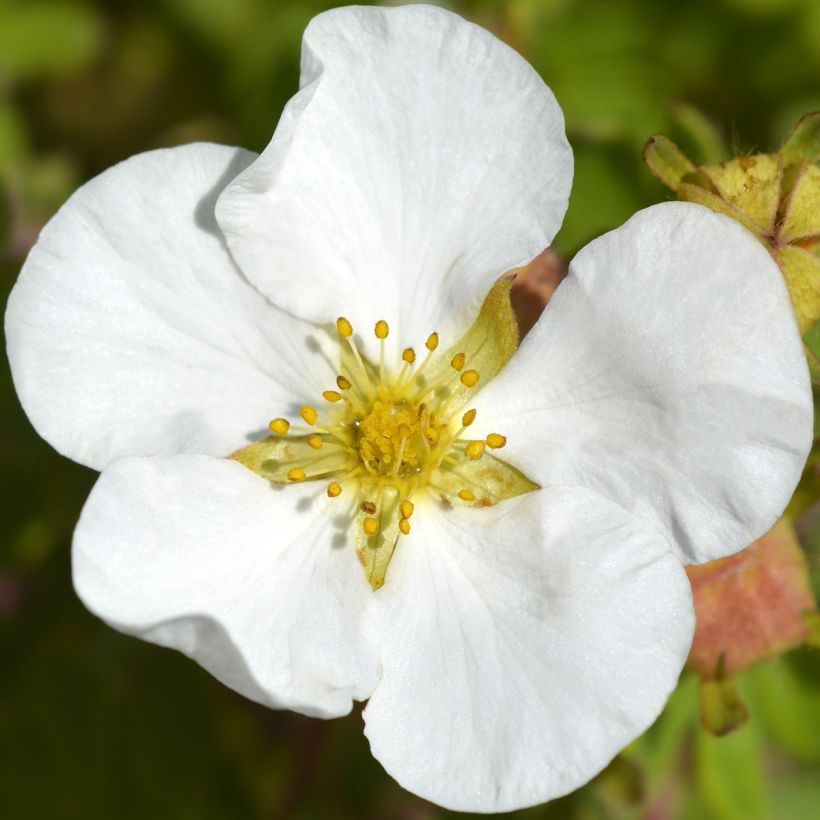

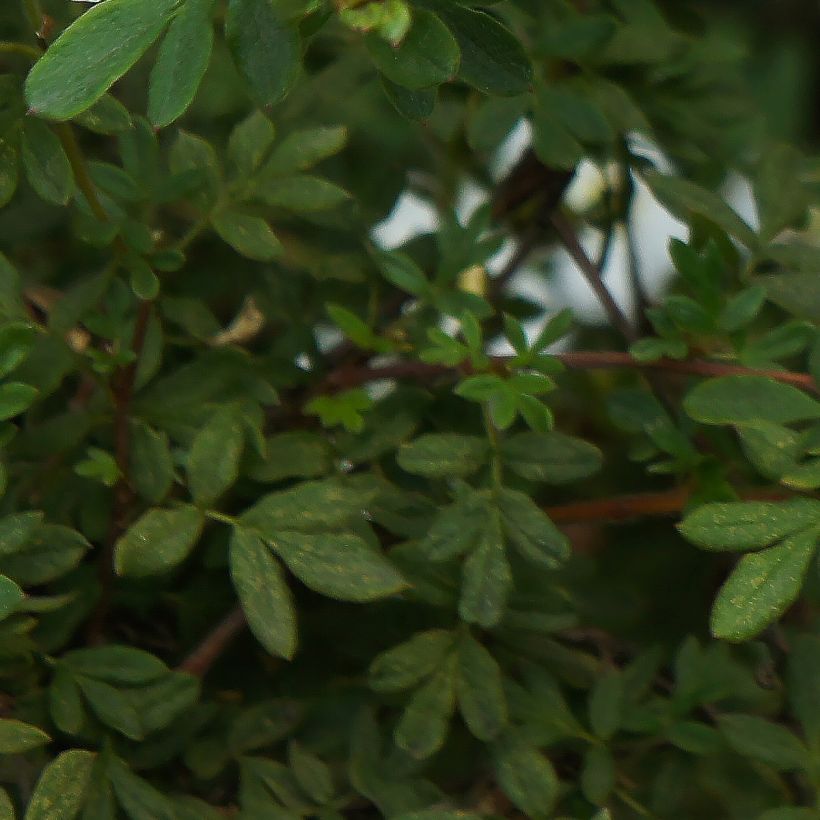

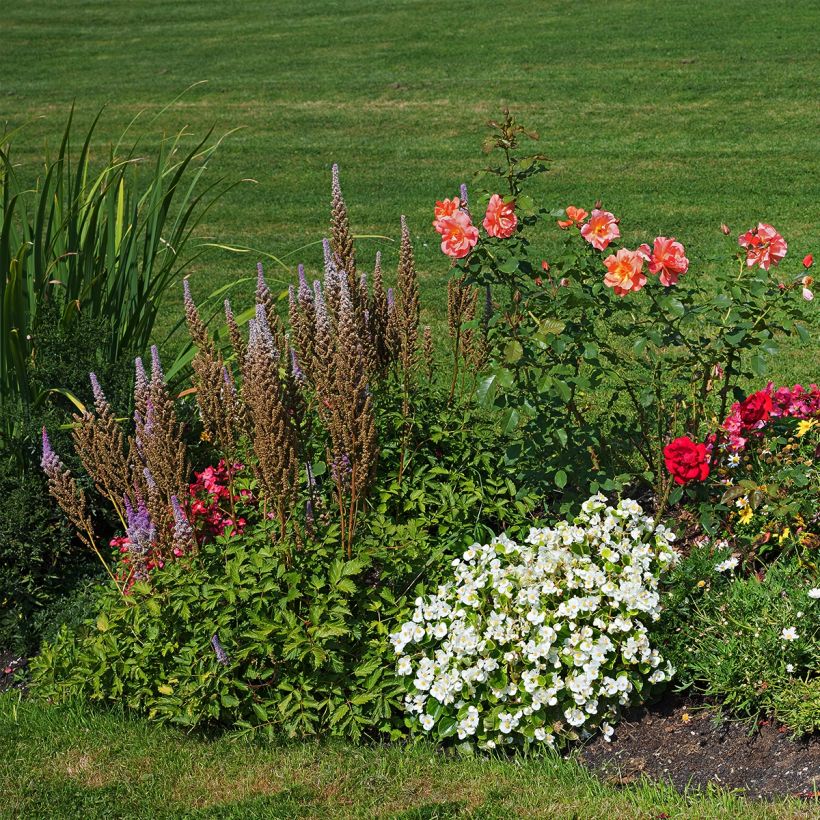

Plant habit
Flowering
Foliage
Botanical data
Potentilla
fruticosa
Bella Bianca
Rosaceae
Shrubby cinquefoil, Golden hardhack, Hardhack, Prairie weed, Widdy
Cultivar or hybrid
Other Potentilla - Cinquefoils
Planting and care
Very easy to grow, Potentilla fruticosa 'Bella Bianca' is very hardy and can withstand low temperatures ,below -25°C (1°F). It prefers a sunny or partially shaded position. Its only real requirement is the nature of the soil where it is planted. It requires ordinary, poor, sandy, or even rocky and well-drained soil. It is also possible to lighten the soil at the time of planting by adding sand and gravel to improve drainage.
It is also drought tolerant once established. The shrubby Potentilla does not require much maintenance. It flowers on the shoots of the same year, and a simple annual pruning is necessary to refresh it. It is recommended to prune back the stems that have borne flowers the previous year in early spring, just above a bud, in order to stimulate regrowth and maintain the beautifully bushy shape of your Potentilla. It is also desirable to remove faded flowers to encourage flowering to continue for a long time.
Planting period
Intended location
Care
-
, onOrder confirmed
Reply from on Promesse de fleurs
Haven't found what you were looking for?
Hardiness is the lowest winter temperature a plant can endure without suffering serious damage or even dying. However, hardiness is affected by location (a sheltered area, such as a patio), protection (winter cover) and soil type (hardiness is improved by well-drained soil).

Photo Sharing Terms & Conditions
In order to encourage gardeners to interact and share their experiences, Promesse de fleurs offers various media enabling content to be uploaded onto its Site - in particular via the ‘Photo sharing’ module.
The User agrees to refrain from:
- Posting any content that is illegal, prejudicial, insulting, racist, inciteful to hatred, revisionist, contrary to public decency, that infringes on privacy or on the privacy rights of third parties, in particular the publicity rights of persons and goods, intellectual property rights, or the right to privacy.
- Submitting content on behalf of a third party;
- Impersonate the identity of a third party and/or publish any personal information about a third party;
In general, the User undertakes to refrain from any unethical behaviour.
All Content (in particular text, comments, files, images, photos, videos, creative works, etc.), which may be subject to property or intellectual property rights, image or other private rights, shall remain the property of the User, subject to the limited rights granted by the terms of the licence granted by Promesse de fleurs as stated below. Users are at liberty to publish or not to publish such Content on the Site, notably via the ‘Photo Sharing’ facility, and accept that this Content shall be made public and freely accessible, notably on the Internet.
Users further acknowledge, undertake to have ,and guarantee that they hold all necessary rights and permissions to publish such material on the Site, in particular with regard to the legislation in force pertaining to any privacy, property, intellectual property, image, or contractual rights, or rights of any other nature. By publishing such Content on the Site, Users acknowledge accepting full liability as publishers of the Content within the meaning of the law, and grant Promesse de fleurs, free of charge, an inclusive, worldwide licence for the said Content for the entire duration of its publication, including all reproduction, representation, up/downloading, displaying, performing, transmission, and storage rights.
Users also grant permission for their name to be linked to the Content and accept that this link may not always be made available.
By engaging in posting material, Users consent to their Content becoming automatically accessible on the Internet, in particular on other sites and/or blogs and/or web pages of the Promesse de fleurs site, including in particular social pages and the Promesse de fleurs catalogue.
Users may secure the removal of entrusted content free of charge by issuing a simple request via our contact form.
The flowering period indicated on our website applies to countries and regions located in USDA zone 8 (France, the United Kingdom, Ireland, the Netherlands, etc.)
It will vary according to where you live:
- In zones 9 to 10 (Italy, Spain, Greece, etc.), flowering will occur about 2 to 4 weeks earlier.
- In zones 6 to 7 (Germany, Poland, Slovenia, and lower mountainous regions), flowering will be delayed by 2 to 3 weeks.
- In zone 5 (Central Europe, Scandinavia), blooming will be delayed by 3 to 5 weeks.
In temperate climates, pruning of spring-flowering shrubs (forsythia, spireas, etc.) should be done just after flowering.
Pruning of summer-flowering shrubs (Indian Lilac, Perovskia, etc.) can be done in winter or spring.
In cold regions as well as with frost-sensitive plants, avoid pruning too early when severe frosts may still occur.
The planting period indicated on our website applies to countries and regions located in USDA zone 8 (France, United Kingdom, Ireland, Netherlands).
It will vary according to where you live:
- In Mediterranean zones (Marseille, Madrid, Milan, etc.), autumn and winter are the best planting periods.
- In continental zones (Strasbourg, Munich, Vienna, etc.), delay planting by 2 to 3 weeks in spring and bring it forward by 2 to 4 weeks in autumn.
- In mountainous regions (the Alps, Pyrenees, Carpathians, etc.), it is best to plant in late spring (May-June) or late summer (August-September).
The harvesting period indicated on our website applies to countries and regions in USDA zone 8 (France, England, Ireland, the Netherlands).
In colder areas (Scandinavia, Poland, Austria...) fruit and vegetable harvests are likely to be delayed by 3-4 weeks.
In warmer areas (Italy, Spain, Greece, etc.), harvesting will probably take place earlier, depending on weather conditions.
The sowing periods indicated on our website apply to countries and regions within USDA Zone 8 (France, UK, Ireland, Netherlands).
In colder areas (Scandinavia, Poland, Austria...), delay any outdoor sowing by 3-4 weeks, or sow under glass.
In warmer climes (Italy, Spain, Greece, etc.), bring outdoor sowing forward by a few weeks.

































